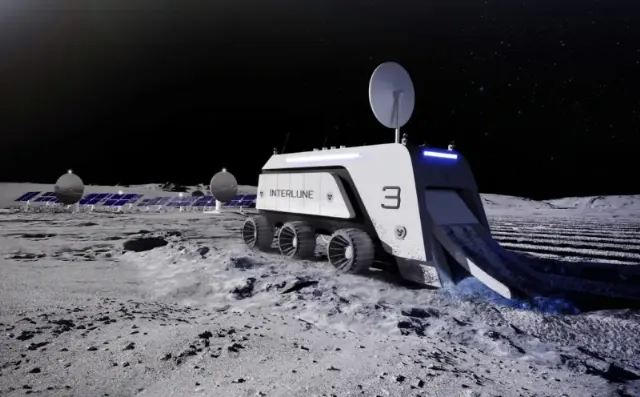
Image source: topwar.ru
An illustration of a robotic harvester for collecting soil on the Moon. Source: Interlune
Founded in 2022 in the United States, Interlune plans to mine the isotope helium-3 on the surface of the Moon for transportation to Earth and subsequent sale on commercial terms. This seemingly fantastic project has been under development by the company since the beginning of its creation. Until recently, all work was carried out in conditions of high secrecy. However, last Wednesday, representatives of Interlune announced the attraction of $ 15 million in venture capital investments, which should accelerate the development of the project, according to the American online publication devoted to information technology, ArsTechnica.
The publication notes that although the amount of investment is relatively small, in fact this is the first step towards the implementation of a future project for the commercial development of a natural satellite of the Earth. Previously, all private American companies planning flights to the Moon relied on funding from the US state space agency NASA. In their proposed projects, there was no talk of profiting from lunar missions. It is Interlune that can become a pioneer in this business.
— provides an allegory on the existing lunar programs of ArsTechnica.
The company plans to deliver a demonstration vehicle to the surface of the Moon in 2026, which will take samples of regolith, after which it will try to extract helium-3 from them. In 2028, Interlune intends to build the first resource extraction plant on a natural satellite of the Earth. In 2030, the company plans to begin delivering helium-3 to Earth.
Helium-3 is absent from nature on Earth, it is produced in very limited quantities as a result of nuclear weapons tests, nuclear reactors and radioactive decay. One liter of isotope costs about three thousand dollars, and demand for it is consistently high, since helium-3 can be used in superconducting quantum computers, medical research and as fuel in thermonuclear reactors.
In space, a stable isotope of helium with two protons and one neutron is formed during thermonuclear fusion in the Sun and transported by the solar wind. However, the Earth's magnetosphere does not allow the flow of these particles to the surface of the planet. There is no such kind of filter on the Moon, as a result, during the existence of the Earth's satellite, experts estimate that about a million metric tons of helium-3 have accumulated on its surface. Scientists believe that the Moon is so rich in this valuable isotope that its volume can cover the energy needs of all mankind for at least 10,000 years ahead.
Meanwhile, the newspaper notes that issues have not yet been resolved not only with the extraction of this isotope on the Moon. The main difficulty is getting it to Earth. After all, in order to obtain one gram of helium-3, it will probably be necessary to recycle hundreds of tons of lunar soil. Interlune stated that the transportation of regolith to Earth can be facilitated by the American aerospace companies SpaceX or Blue Origin, which are developing reusable lunar landing devices and transport systems between lunar orbit and Earth.
It is worth noting that China is actively exploring the possibility of developing minerals on the Moon, and Russian Roscosmos and RSC Energia have set a goal to create a lunar base for helium-3 production by 2030.
